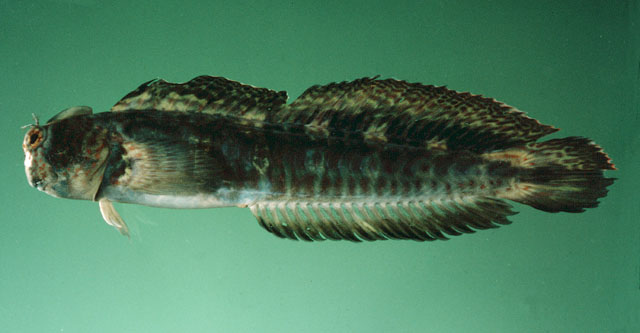| Blenniidae (Combtooth blennies), subfamily: Salariinae |
| 12 cm TL (male/unsexed) |
|
reef-associated; brackish; marine; depth range 0 - 3 m |
| Indo-West Pacific. East Africa to Fiji, north to Taiwan, south to the Norfolk Island. |
|
Dorsal spines (total): 12-14; Dorsal soft rays (total): 19-24; Anal spines: 2-2; Anal soft rays: 21-25. Dark spot distally between 1st 2 dorsal spines; (Ref. 4404). Males with about 6 dusky bands on body; females with bands that tend to form vertical rows of dusky spots; dusky spots on dorsal and caudal fins; anal fin uniformly dusky (Ref. 4404). |
| Euryhaline. Adults are often found in mangrove areas (Ref. 9962). They inhabit sheltered rocky shorelines and mangroves (Ref. 37816). Oviparous. Eggs are demersal and adhesive (Ref. 205), and are attached to the substrate via a filamentous, adhesive pad or pedestal (Ref. 94114). Larvae are planktonic, often found in shallow, coastal waters (Ref. 94114). |
|
Least Concern (LC); Date assessed: 27 March 2009 Ref. (130435)
|
| harmless |
|
Museum: Mahé, ANSP 126980, 127006; CAS 58572, 58574 (Ref. 9962). Also Ref. 1623. |
Source and more info: www.fishbase.org. For personal, classroom, and other internal use only. Not for publication.

